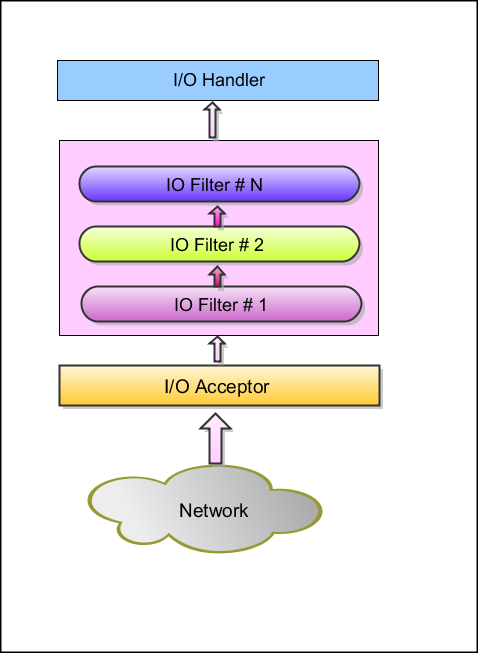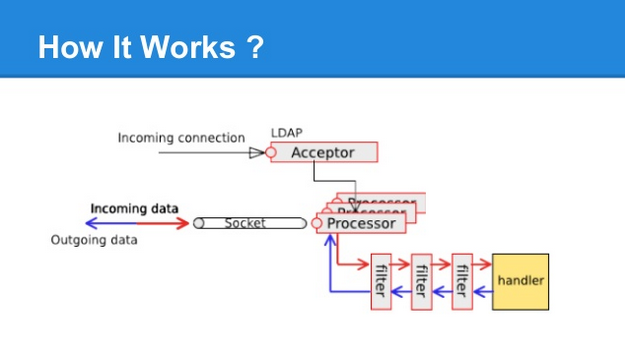2.1.1 - Server Architecture
We have exposed the MINA Application Architecture in the previous section. Let’s now focus on the Server Architecture. Basically, a Server listens on a port for incoming requests, process them and send replies. It also creates and handles a session for each client (whenever we have a TCP or UDP based protocol), this will be explain more extensively in the chapter 4.

- IOAcceptor listens on the network for incoming connections/packets
- For a new connection, a new session is created and all subsequent request from IP Address/Port combination are handled in that Session
- All packets received for a Session, traverses the Filter Chain as specified in the diagram. Filters can be used to modify the content of packets (like converting to Objects, adding/removing information etc). For converting to/from raw bytes to High Level Objects, PacketEncoder/Decoder are particularly useful
- Finally the packet or converted object lands in
IOHandler.IOHandlers can be used to fulfill business needs.
Session creation
Whenever a client connects on a MINA server, we will create a new session to store persistent data into it. Even if the protocol is not connected, this session will be created. The following schema shows how MINA handles incoming connections:

Incoming messages processing
We will now explain how MINA processes incoming messages.
Assuming that a session has been created, any new incoming message will result in a selector being waken up